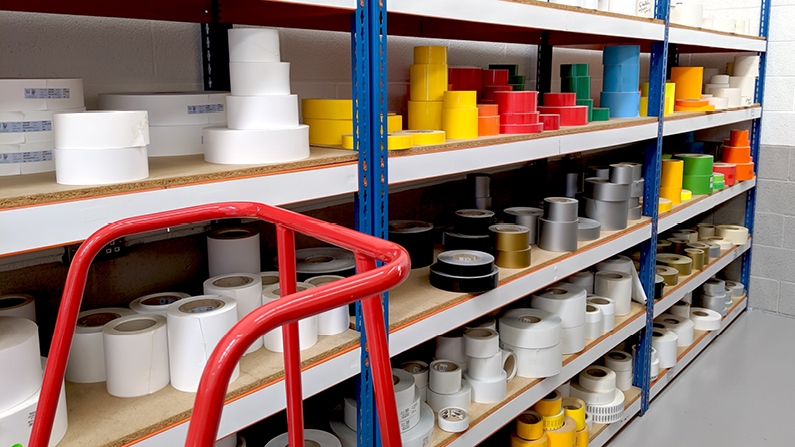As with most of our labelling products, the unit price drops as the quantity of the order goes up. So, ordering 1,000 labels may cost you 15 pence per label dependant upon on the label size and choice of material. However, if the order quantity is increased to 3,000 labels then the unit price may drop to 9 pence. The reason for the drop in unit price is due to the fact the cost of production is similar before the first label gets printed, this is then absorbed across the total quantity of labels printed. This reduction in unit price based on order quantity is a common practice among many manufacturing industries, so it makes sense to order more, right? Well, that isn’t always the case and here’s why.
Firstly, storing any product usually comes with a cost. This may be in the form of storage space, handling charges and a product may also require changes in the future due to legal changes in the marketplace. If this happens then any labels that you may have in stock become surplus to requirements and will require a re-print which wipes out any savings made on the initial order.
Another factor is that the raw materials used to create your label order have a ‘shelf life’. Adhesives used in the product do begin to lose their adhesive properties over time if they have yet to be applied an end product. Shelf life can also be affected by storage conditions or environment, material manufacturers use 22 degrees C and 50% relative humidity as their benchmark when estimating shelf-life, so any major changes from that may affect the effectiveness of the product e.g. cause decolouration and limit the effectiveness of the adhesive.
In most cases, label material manufacturers state a shelf-life of just 18 months is a reasonable expectation and that period begins when the material is produced. In general, you can sensibly expect a shelf life of 12-18 months (and maybe more) in most conditions, but leaving rolls or sheets of unused labels on the shelf for extended periods can have unexpected results.


Recent Comments